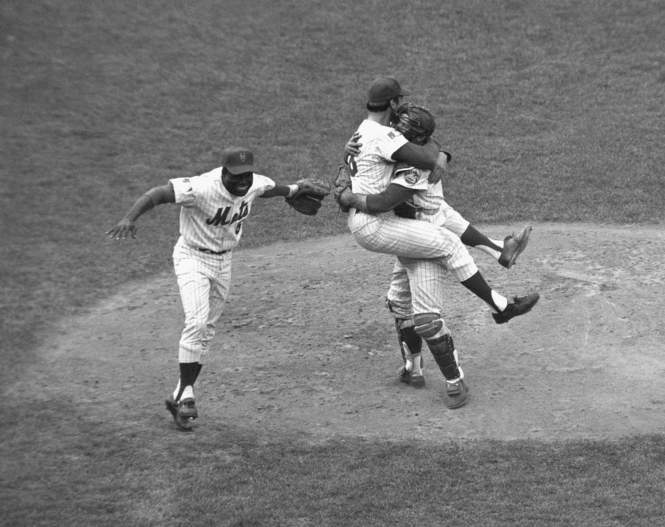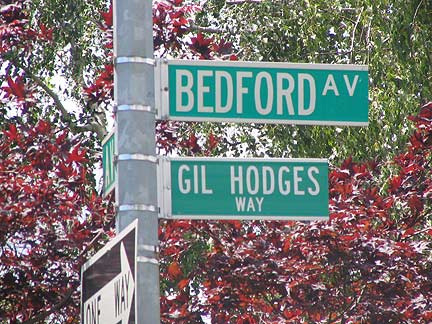|
Rusty Staub, Bud Harrelson, Ed Kranepool, Art Shamsky, Ed Charles, Skip Lockwood and Joan Hodges -- just to drop a few names.
A lot of early Mets history will be coming to Hofstra University on Long Island Thursday, Friday and Saturday. Then there are the writers (Stan Isaacs and Steve Jacobson) and broadcasters (Sal Marciano) and historians (John Thorn) among panel members, commemorating the 50th anniversary of the Amazing Mets in a conference that figures to be both academic and fun. I'll be moderating two panels at Hofstra, my alma mater, Friday afternoon. In the spring of 1962, I was taking my one and, as it turned out, my only graduate course -- the novel, with a terrific three-week segment by Dr. Hull on Ulysses, about a very human being who spends a long day wandering but finally gets to go home. How fitting. . In sleet and rain, on Friday, April 13, also fitting, I attended the Mets' first home game – as a fan -- at the Polo Grounds, along with my Newsday pal George Usher. By mid-season I was one of Casey Stengel’s “my writers,” standing by his side at his 72nd birthday party in St. Louis, when he most emphatically did not ask, “Can’t anybody here play this game?” Never signed up for any more grad courses. Dr. Hull and Casey. Both great teachers. With my three grad credits, I get to run two panels Friday afternoon at the Hofstra conference. At 3:15 PM, I will introduce my long-time friend, Ed Charles, the heart and soul of the 1969 Mets, who promises to recite a new poem for the anniversary. And at 4:15 PM, I will conduct a panel entitled: New Yorkers Recall the Dark Ages: Four Long Years Before the Birth of the Mets. Panel members will include Joan Lombardi Hodges, Gil Hodges, Jr., Stan Isaacs, the landmark Newsday columnist known for his appropriately-named column Out of Left Field, and Marty Adler, head of the Brooklyn Dodgers Hall of Fame. Although a proud son of Brooklyn, Stan Isaacs promises to stick up for his dearly departed New York Giants. We will be talking about the four lean years without the National League in New York,and then the bizarre early years of the Amazing Mets. For information: http://www.hofstra.edu/community/culctr/culctr_events_mets.html
Brian Savin
4/23/2012 11:57:05 pm
OK, where we you (anyone) when the Mets played their first game out in St. Louis? It was my parents 14th wedding anniversary and I listened to every minute, including all the post game on the radio in bed. Roger Craig wasn't perfect. That guy Stan Musial pretty nearly was. Disappointment wouldn't be matched until college and girls!
Janet Vecsey
4/25/2012 09:54:46 am
George, 1/29/2013 12:45:15 am
I like the way you explained the difficult topic with such details. This is something I have been exploring about for a long time and you really provided all details of this topic. 8/24/2013 04:37:31 am
Another excellent example of innovation, I am happy to locate it. There are so many developers working on this segment but this is one of the best innovative idea ever. Thanks for sharing it here. 11/4/2013 08:31:46 am
I really like your blog.Always been very informational.I hope you'll keep up the good work and maintain the standard. Comments are closed.
|
Categories
All
|











